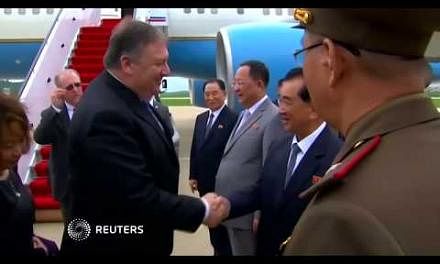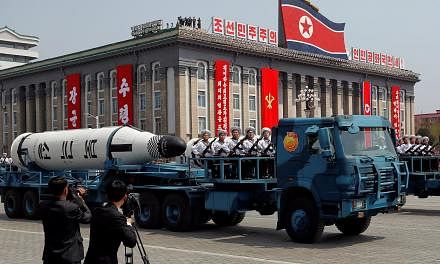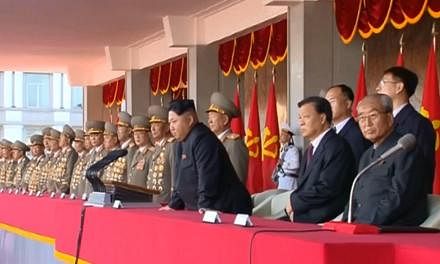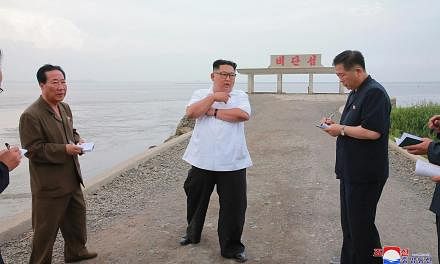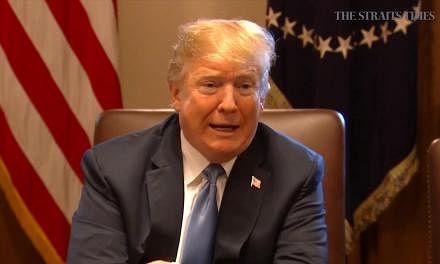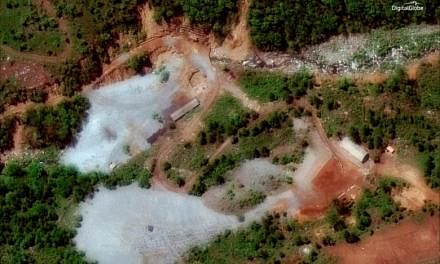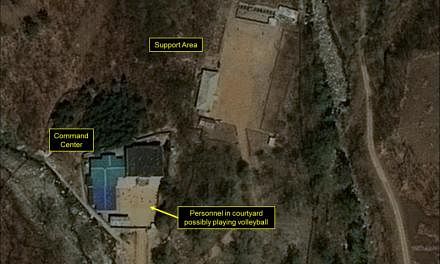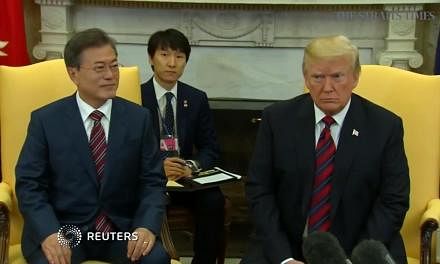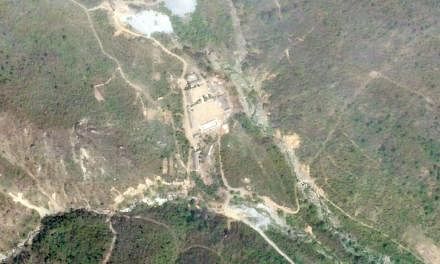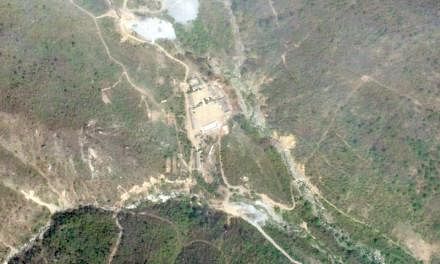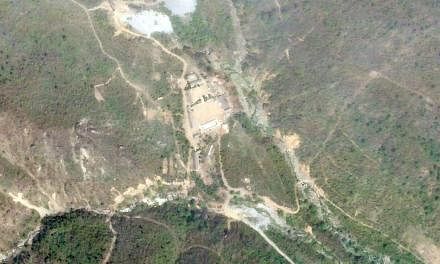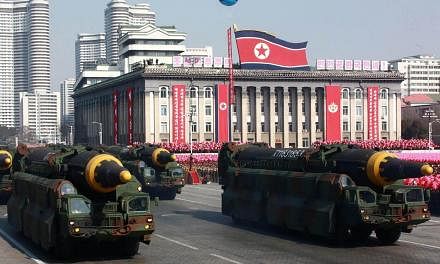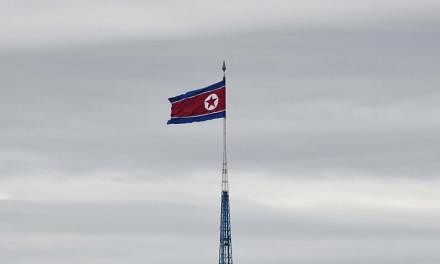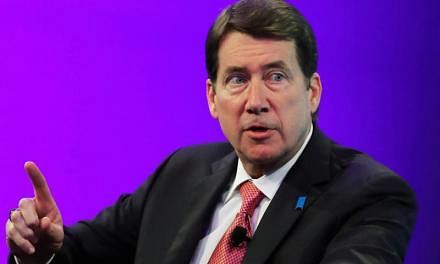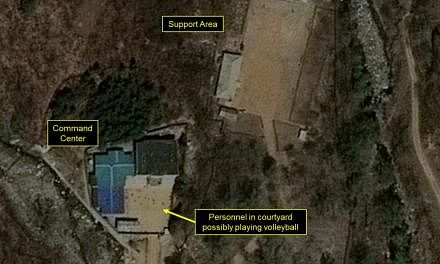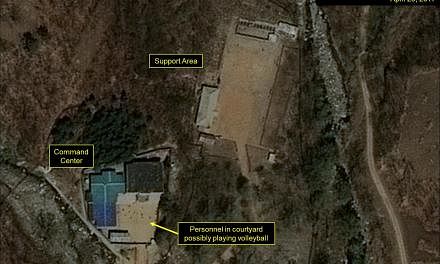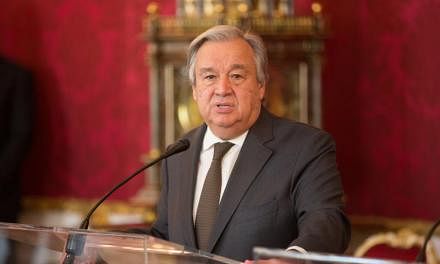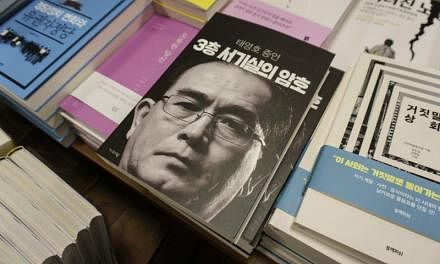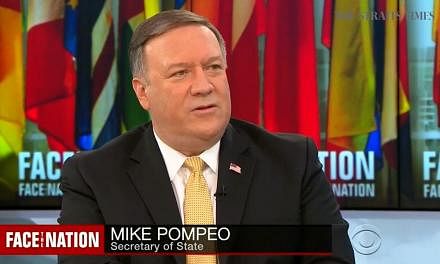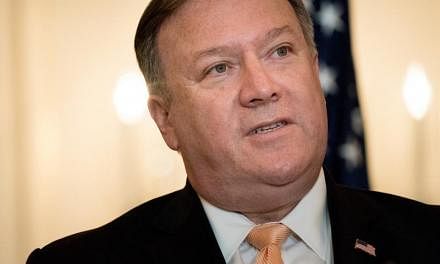SEOUL - South Korea has announced it will install the remaining four launchers of a United States missile shield, conduct more drills and seek the deployment of powerful US assets, including strategic bombers, in a sign of stronger military actions to come in response to North Korea's nuclear test.
The Defence Ministry announced the decision to complete the deployment of the Terminal High Altitude Area Defence (Thaad) and allow the construction of additional facilities at its base in Seongju on Monday (Sept 4), paving the way for the system to become fully operational against the North's escalating nuclear and missile threats.
The announcement came as South Korea and the US agreed to seek the deployment of powerful assets, including a nuclear-powered aircraft carrier and strategic bombers, and as South Korea's air force and army conducted exercises involving long-range air-to-surface missiles and ballistic missiles.
South Korea's Defence Minister Song Young Moo hinted at more military action, saying that the country's top security officials are now starting to shift towards imposing stronger military options against the North, rather than to push for engagement.
He told parliament that "views converged on strengthening the military standoff" during Sunday's national security meeting, amid growing calls for South Korea's liberal president Moon Jae In to harden his stance against the North.
This is also in line with US President Donald Trump's Twitter message that South Korea's "talk of appeasement with North Korea will not work".
The strong show of force came a day after Pyongyang claimed to have conducted a "perfect" test of a hydrogen bomb that can be mounted onto an intercontinental ballistic missile (ICBM) capable of striking US mainland. The test - North Korea's sixth and most powerful since 2006 - produced an estimated yield of 50 kilotonnes.
South Korea's intelligence agency warned on Monday that North Korea may fire another ICBM to mark two upcoming anniversaries, a move that will further raise tensions. The regime already tested two ICBMs in July.
President Moon and his Japanese counterpart Shinzo Abe, in a phone conversation on Monday, agreed to ramp up pressure on North Korea to a "whole new level" and to seek stronger United Nations Security Council sanctions against the regime.
Mr Moon also said there is a need for stern measures against Pyongyang until it can "feel the pressure", according the presidential Blue House.
Separately, South Korea and the US also agreed to hold talks on extended deterrence against the North on an annual basis. The allies said in a press statement that North Korea's provocations and belligerent rhetoric will not change US commitment to South Korea's defence, but rather, drive the two allies to work more closely to "counter this grave threat".
South Korea's military will also stage a unilateral drill later this month that involves F-15K fighter jets firing 500km-range missiles that are capable of launching precision strikes on North Korea's nuclear and missile sites, the Defence Ministry said in a report to parliament.


